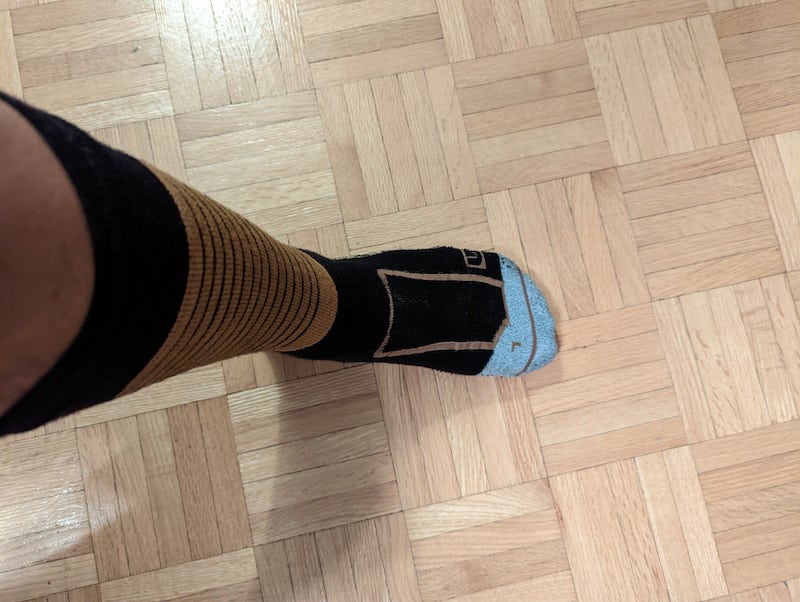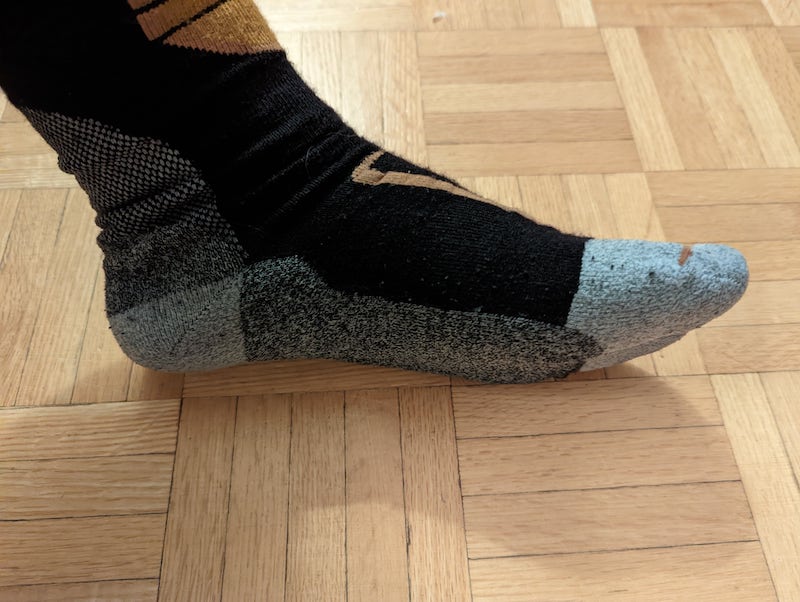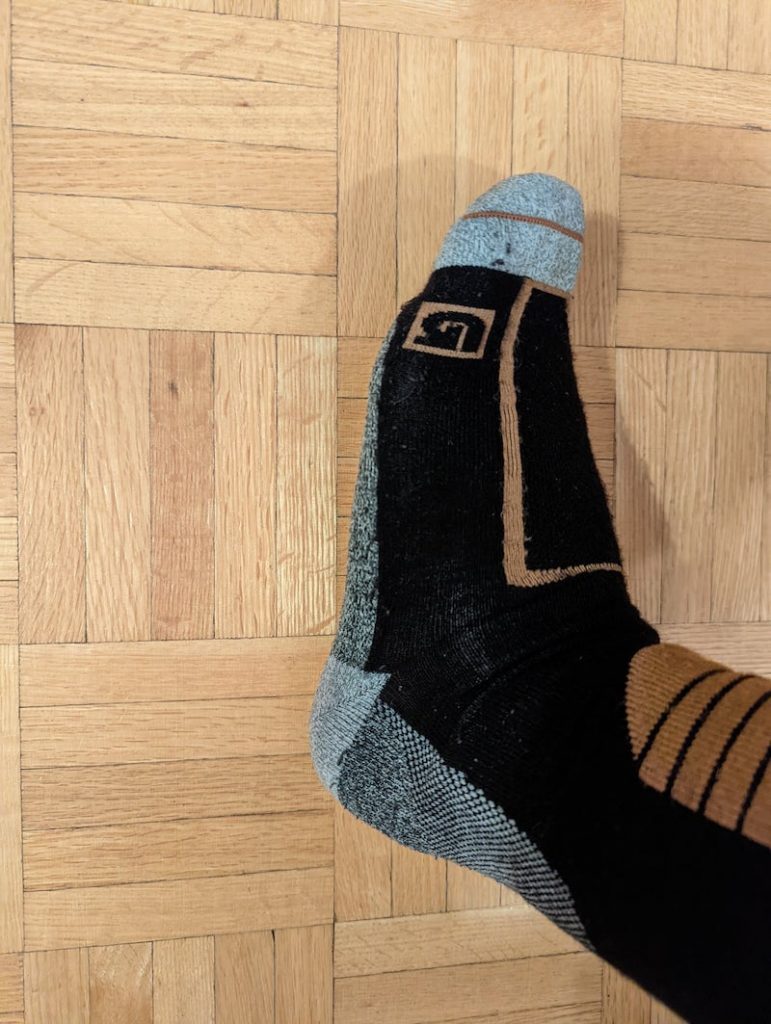When snowboarding, especially at first, it doesn’t really matter what type of socks you wear. As long as you ride and have fun and safe, you’re good. It’s true, although later on the more you do this (riding that is), the more you’ll realize there are better tools for the job which will even give you a better time at the slopes. “There are snowboard socks!?”. Yes, and this quick article is all about giving you tips on how to pick the right pair of snowboard socks, what to look for, etc.
Buy Many!
The very first thing I learned (eventually) is that, unlike snowboard jackets (items which are expensive and when you buy one, you’ll probably hold onto that one for years on years, for snowboard socks, it’s more of a numbers game. Have several!
Yes it’s more expensive than regular socks, but when you can, have several pairs. You want more primarily for the hygiene and health of it all 😂 . At the same time, you’ll have variety. No, not just in terms of quantity but later on, you’ll find that: “ooh, this brand is better for the thick snowboard socks, this one for light weight ones. This one I like the shape and weight of it, etc”. The more you buy around, the more you can find the pairs that fit (ha) you.
Material
The “gold standard” here is Merino Wool. If you can, that’s the material you’d want to go for. Why? First, it’s moisture wicking (sweat comes out of sock, not just pool there; ew right). Second, it’s known to be warm and at the same time breathable. Third, the material is inhospitable to germs and bacteria which means lesser stink and nasty stuff after each use and when you throw it in the hamper!
What if you don’t have access or you don’t want wool (e.g.: allergic)? That’s ok too. You’d still be able to ride for sure. Sure you won’t get the moisture wicking and no-stink advantages, but hey it’s the same; you’d still be able to ride.
What I’d suggest for sure is NOT use cotton socks, since it’s literally the exact opposite of the features I’ve described above.
Synthetics work better. After all, my football(soccer) socks are synthetic(polyester I believe?).
There’s also wool (not Merino). I think it’s almost the same as Merino. The only difference I’ve noticed is that when a sock is advertised as just wool, they tend to be on the thicker side. I find these when I shop around in fashion brands, not necessarily snowboard shops. They’re thick not because it’s “meant for heavyweight use or the coldest nights”, but rather they’re just always presented as thick. Thick wool sweaters and jackets; always thick lol. Merino wool, when applied to snowboard socks, seems to be more processed and thinner (yet most of the time denser).
Choose the Right Thickness
On top of the material there’s the thickness too. When you walk up to a shop and go through the ski/snowboard socks section, you may notice different weights: (e.g.: lightweight, midweight, heavyweight). These categorizations speak more of the thickness of the material and which is better for what riding.
Lightweight socks are perfect for those warm and sunny spring laps while heavyweight socks are much needed for those ultra-cold, blizzard type of scenarios.
L/R markings on some socks
Not sure if you noticed but in some (if not all?) snowboard socks, they have this “L” and “R” on them? It’s specifically telling you, “this sock is for your (L)eft foot, this for the (R)ight”. They’re not just being fancy. It will actually make sense.
You see, technical snowboard socks actually have strategic varying thickness on different parts of your foot. To name a few, you’ll notice that it’s thicker on your shin area or maybe on the bottom of your foot area. Where it gets tricky is the top of your foot and the arches.
Some technical snowboard socks follow the arch and curve of your foot. See here…

First, you see how there’s the grey part on my socks? They’re not just design. The grey part actually is slightly thicker than the black parts (same for the orange bands on the shin area actually). I think the thickness isn’t necessarily just for warmth but rather for abrasion as well.
More specifically, you see how the grey part covers more when it comes to the big toe area? So if you wear this right on left, you’ll be unnecessarily reinforcing your pinky toe and leaving your big toe out 😂.
The left photo is the inside / arch of my foot while the right is me flexing out the outer part of my foot.
(on the left photo) See how the bottom gray part cuts and follows (somewhat) the arch of my foot? It actually feels nicer and it makes more sense. Compare that with the right photo (outside of my foot) where it’s just straight padding from heel to toe.
Why not just make it this all over?
Valid question and the quick answer is, it’ll hurt lol. Imagine, your boot’s tight, your binding’s making it more tight, and your socks are tight too. If your socks are thick and tight all over, that’ll just constrict you and make things painful.
You’ll notice this later (or maybe you have already). Have you ever ridden and realized halfway through that there’s a burning pain at a specific part of your sock/boot only to realize when opening that it was either a tiny tiny rock or a fold/crease accidentally happened making that part of your socks 2-4x thicker? Yup, you’d be surprised that in ski/snowboarding creases and folds cause pain 😂. So that’s kind of the closest example.
Snug/Size
Like most clothing, you want to buy socks that are exactly for your size. You want your socks snug, tight (but not constricting) so that it doesn’t slide down as you ride. I don’t think that has happened to any of my snowboard socks.
Also you don’t want a loose sock wherein when you’re riding you’re actually sliding around in your boots as you ride. It will make it way more difficult for you to engage in turns and simply to just balance.
At the same time, don’t confuse and compensate the thickness using the size of your socks. E.g.: “I know I’m a medium but I get cold easily so I’ll get L because it’s thicker.”. Again, the size and thickness are two different things. I just discussed the thickness above. Apart from that you want the size you are for the snowboard socks that you’re about to buy.
Length
It’s kind of difficult to mess this up since if you go for snowboard socks in any shop, you’ll notice that they’re all/mostly long socks. There’s not specific cm or inch on how long snowboard socks should be but the guideline is, they’re usually pretty close to your knees, if not at the upper part of your shin.
I think the important part here is that your socks should be as tall (if not taller) as your snowboard boot. My reasoning is that it helps keep your comfort consistent throughout the boot. You don’t want it where “this part of my foot in the boot is too tight but then this part is airy and loose”. Like are you going to tighten your boots accordingly with that information?! ahha.
You don’t really have to worry about length since they’re all consistent (they’re all long socks). I don’t think there are ankle-height snowboard socks lol so you really can’t go wrong.
Wrap Up
If you just walk up to the socks section of a ski/snowboard shop, you can pick anything and can’t go wrong. If you’re not in a ski/snowboard shop or if you just want to understand more about your purchase and what to look for/how snowboard socks work, I hope this article helped you!



